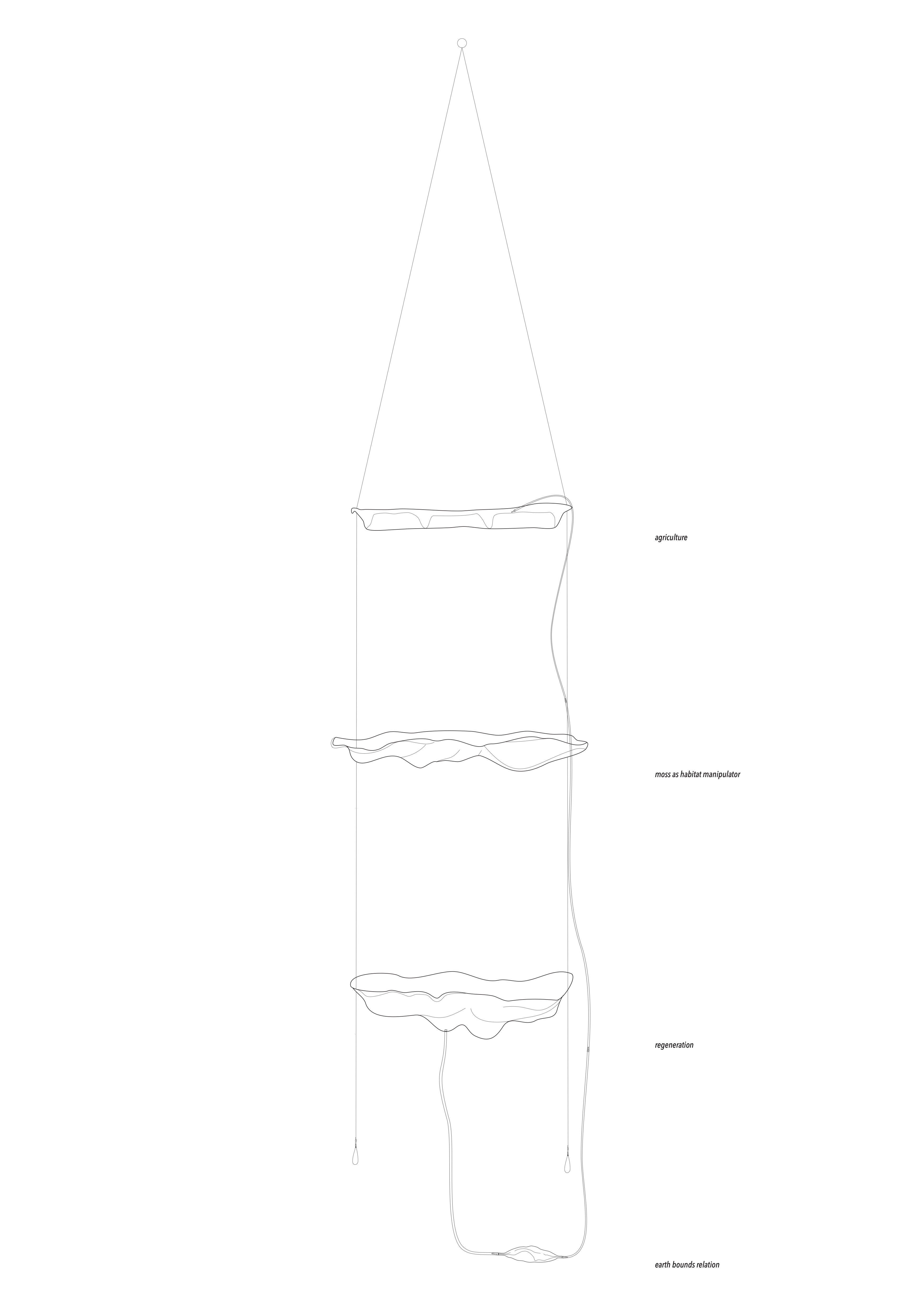sphagnum moss as teacher
This project is following the question: What can we learn from sphagnum moss?
Sphagnum moss embodies dependency and care, promoting community through its actions.
By creating anaerobic conditions, Sphagnum inhibits tree growth and decomposition, leading to a diverse ecosystem. This teaches us the importance of contributing to the community’s welfare and creating conditions that allow various life forms to thrive. Additionally, this behavior shows us that it is possible to adapt our environment to meet our needs while respecting and promoting the natural cycle of nutrients.
Sphagnum’s ability to form deep layers of dead peat that preserve environmental history reminds us that our actions have long-term impacts. It encourages us to think in terms of generations and to preserve the Earth for future descendants. Acting like a sponge that stores water and alters the soil to suit its needs, Sphagnum moss highlights the importance of efficiently using resources and actively shaping the environment for sustainable living. Moreover, Sphagnum moss is adaptable and resilient, thriving in extreme conditions such as acidic, water-rich environments where other plants struggle to survive. This teaches us the importance of being flexible and resilient in the face of difficult circumstances.

The installation built of three distinct landscapes, reflecting the transformation from past and present agricultural use. It uses sphagnum moss as a habitat manipulator to promote regeneration and serves as a tool to question our earthbound relationship.



